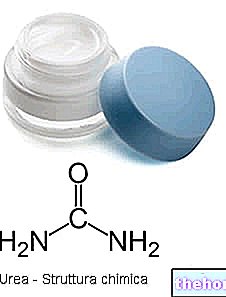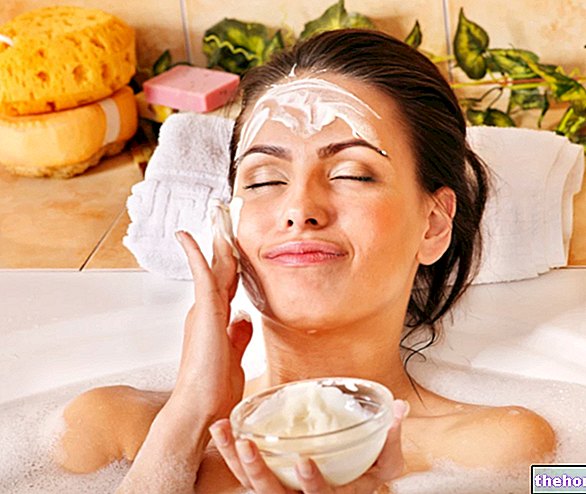Watch the video
- Watch the video on youtube

Couperose is more commonly known by the term "copparosa", to indicate a skin imperfection that is found at the level of the cheeks, between the cheekbones and the wings of the nose, assuming a particular butterfly-winged appearance.
Couperose is not recognized so much as a pathological problem, rather as a cosmetic and aesthetic disorder.
From the diagnostic point of view, couperose is recognized as a skin lesion that presents with diffuse micro-telangiectasias, linked to the excessive porosity and fragility of the capillaries, which not only lose elasticity, but undergo such a dilation as to paint the face with spots and veins decidedly unsightly reddish localized in the cheeks, cheekbones and wings of the nose.
Another symptom that characterizes people who suffer from couperose is the sensation of strong heat that is released in the areas affected by the disorder. This symptom is particularly intense in case of strong emotions and / or temperature changes.
Furthermore, although it is considered as a purely aesthetic disorder, couperose should not be underestimated, due to the fact that it can evolve into a more serious dermatological manifestation, known by the term rosacea (or acne rosacea), a chronic disorder affecting the skin. , in particular cheeks, forehead and nose, causing papules, pustules and telangiectasias (dilation of small blood vessels with vascular lesions), following inflammation of the hair follicles.
in fact, it ranges in very vast fields, the causes being many and very different from each other.
In addition to the genetic predisposition to the development of the disorder, a possible triggering cause is represented by hormonal dysfunctions: the level of corticosteroids in the blood tends to be higher in people with couperose, so much so that the problem is often a consequence of chronic therapies with cortisone.
Frequent and prolonged exposure to climatic variations, solar radiation, cold, humidity and wind also contribute to the alteration at the level of the sub-epidermal microcirculation: precisely for this reason couperose could occur especially among farmers, cooks or people whose use leads to consistent thermal variations.
Furthermore, there are several factors that can favor or worsen the clinical manifestations of couperose, among these we find:
- The excess of alcohol which - associated with intestinal and hepatic dysfunctions - can aggravate the alteration in the microcirculation, due to the repeated release of toxic substances.
- The emotional factors, resulting in the release of substances similar to histamine, which can highlight rosacea more, being endowed with a vasodilating action.
- Some situations of vitamin deficiency, in particular avitaminosis / hypovitaminosis of vitamin C and vitamin PP which can highlight the redness of the capillaries at the level of the face.
- Food excesses, exciting foods and excessive consumption of spices that can facilitate the appearance of couperose.
Finally, only if absolutely necessary, the doctor can refer the patient to a laser or diathermocoagulation treatment to permanently eliminate couperose.
Cosmetic treatments
As it is known, according to Italian health legislation, cosmetic products used in the treatment of couperose cannot act directly on the circulation, because, by definition, a cosmetic has no therapeutic potential.
The cosmetics used in the treatment of couperose, therefore, must contain ingredients capable of exerting a soothing, anti-inflammatory and anti-reddening action. In this regard, remedies of natural origin are particularly useful. calming action for inflamed and red skin.

Natural remedies
To alleviate the typical symptoms of couperose, an expert herbalist must "be able to recommend a cream suited to the patient's needs. Considering that couperose is characterized by capillary fragility and sensitivity, all those plants that can exert a" positive action on the microcirculation level (called capillarotrope), stimulating its circulation and calming local inflammation.

Chamomile, in an anti-couperose cosmetic cream, acts thanks to the soothing and anti-redness properties conferred on it by bisabolol and azulene; also calendula, mallow and the glycyrrhetic acid of licorice are configured as possible natural remedies, thanks to their decongestant properties and anti-inflammatory.
Still, plants such as gotu kola, butcher's broom, blueberry, and horse chestnut (saponin drugs), stimulate subcutaneous microcirculation, consequently decreasing edema and swelling.
Please Note
It should be remembered that couperose is first of all a vascular problem: consequently, a cosmetic product will never be able to solve the problem definitively, but only help to avoid its worsening.
and coffee, can be of particular help in preventing the onset of micro-telangiectasias. Irritating and aggressive cosmetics, which damage the skin, causing sensitization, are also not recommended.Furthermore, the skin should always be protected from UV radiation, cold and excessive heat, since these atmospheric agents are all capable of causing a great worsening in the clinical manifestations of couperose.
Read Also: Remedies for Couperose




























